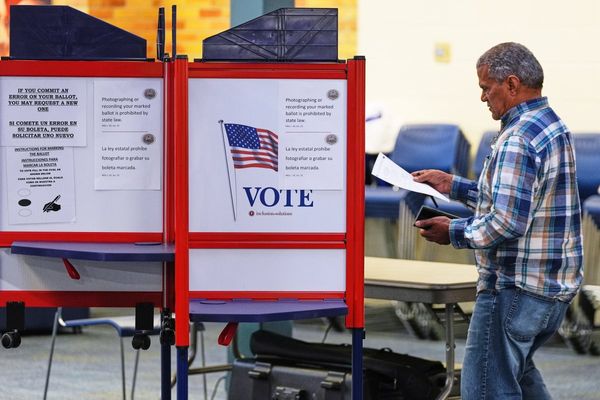
In my Q4 Barchart report on the energy sector, I concluded that the oil market faced bullish and bearish factors in early 2024, writing:
On January 20, 2025, U.S. energy policy did an about-face. Under the Biden administration, energy policy supported alternative and renewable fuels while inhibiting fossil fuels. The Trump administration has pledged to increase U.S. output to lower prices, fight inflationary pressures, reduce dependence on foreign sources, and increase export revenues.
The U.S. consumes over 20 million crude oil barrels daily and has been producing under 14 million barrels daily. Over the coming months and years, increased output could eventually weigh on traditional energy commodity prices. However, like in most commodities, China is a significant consumer. If the Chinese economy rebounds, global energy demand could increase. Moreover, high oil prices in 2022 caused the previous administration to sell unprecedented reserves from the U.S. Strategic Petroleum Reserve. As of January 3, the U.S. SPR stood at the 393.8 million barrel level, 240 million barrels under the level when the Biden administration took office in January 2021. Filling the SPR over the coming months and years could keep a bid under oil prices. Therefore, the oil market faces bullish and bearish factors in early 2025.
Nearby NYMEX crude oil futures settled 2024 at $71.72 per barrel. While the oil market has not experienced an explosive rally, the price has increased steadily and is over the $75 per barrel level in late January 2025.
Oil rallies despite promises of more U.S. output
Crude oil prices rallied as the market awaited the January 20 inauguration of the 47th U.S. President, who pledged to increase U.S. fossil fuel production dramatically.

The daily chart of NYMEX WTI crude oil futures over the past three months shows that following the November 5 U.S. election, the nearby contract fell to a $66.24 low on November 18, marginally higher than the October 29 $65.80 low. Meanwhile, the energy commodity broke out of its consolidation pattern in late December, when the price eclipsed $71.63 per barrel and continued to rise. March NYMEX crude oil prices moved 19.85% higher than the November 18 post-election low at the most recent $79.39 January 15 high.
I have been wrong about crude oil prices over the past months, but I remain bearish
Crude oil has rallied since the U.S. election. I had assumed that the results would lower the price, but I was wrong. OPEC+ extended production cuts in December 2024, putting upside pressure on oil prices. Increased sanctions on Russian oil exports at the end of the Biden administration and expectations that the Trump administration will aggressively enforce sanctions on Venezuela and Iran have pushed oil prices higher.
The most recent EIA data on U.S. crude oil production reported 13.477 million barrels of daily output. While the current output is near a record level, it falls far short of where President Trump has pledged it is heading under his administration.
Recent U.S. petroleum imports are at the 6.48 million barrel level. President Trump’s pledge to achieve oil independence and make the U.S. the world’s leading petroleum exporter requires a significant increase in daily output. Daily production will need to rise to the twenty million barrel per day level to achieve equilibrium and above that level to become the leading exporting country. If the incoming administration fulfills its pledge, a significant increase in output will likely weigh on oil prices, sending them significantly lower. Therefore, I remain bearish on crude oil prices for the coming months, expecting them to fall toward the $50 level or lower.
U.S. production and Chinese economic weakness- A bearish cocktail
Over the coming months, increasing U.S. output and continued economic weakness in China will create a bearish picture for crude oil prices.

The chart shows that in 2023, the U.S. and China led the world in petroleum consumption, together requiring over six and one-half times the consumption of third-place India. The bottom line is that rising U.S. output and the weak Chinese economy are bearish for crude oil prices at just below the $80 per barrel level in January 2025.
Lower oil prices reduce OPEC+’s power
Over the past four years, the international oil cartel, OPEC, together with Russian production policy cooperation, has controlled worldwide prices through production cuts and other policies that have kept oil prices elevated.
After crude oil prices spiked to over $130 per barrel in 2022 when Russia invaded Ukraine, prices have declined, with the cartel keeping prices above $60 per barrel through its production cuts. The U.S. energy policy since early 2021 has cooperated with OPEC+. The U.S. focus on climate change by promoting alternative and renewable fuels and inhibiting fossil fuel production and consumption has increased the cartel’s pricing power. Moreover, sales from the U.S. Strategic Petroleum Reserve, which has dropped by 239 million barrels since January 2021 as of January 17, 2025, depleted the U.S. SPR. Refilling the SPR, achieving U.S. oil independence, and making the U.S. the leading global oil-exporting country requires a substantial increase in daily output. If the Trump administration can push U.S. production above 20 million bpd level, it will likely weigh on prices and neuter OPEC+’s pricing policy.
Trading crude oil from the short side with the SCO ETF product
I will continue to trade crude oil from the short side, utilizing the Ultrashort Bloomberg Crude oil -2X ETF product (SCO). SCO is a double leveraged ETF that moves higher when crude oil prices decline. At $15.57 per share, SCO had over $250.7 million in assets under management. SCO trades an average of over 2.124 million shares daily and charges a 0.95% management fee.
SCO’s leverage causes it to lose value if crude oil prices move higher or remain stable, as the ETFs’ gearing causes it to suffer from time decay. SCO employs options and swaps to create the leverage that magnifies the profit potential when crude oil prices decline.
The optimal approach to SCO, and UCO, the bullish leveraged crude oil ETF product, is to accept small losses in the quest for significant gains. Therefore, tight price and time stops, to minimize time decay, create a prudent trading strategy. When stopped out, reentering SCO (or UCO for bullish positions) with new risk-reward dynamics is the best approach for maintaining a risk position.
I have been dead wrong about the path of least resistance of crude oil prices since the November 5, 2024, U.S. election. However, if U.S. output rises under the new administration, the price could be heading for $50 per barrel or lower. I maintain a bearish bias toward crude oil in late January 2025.







